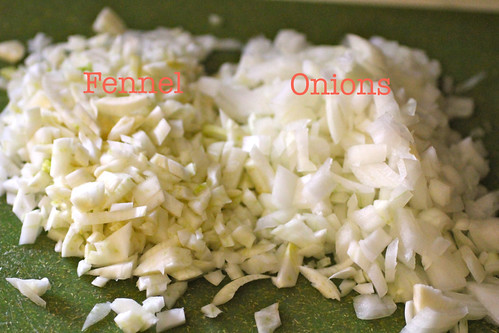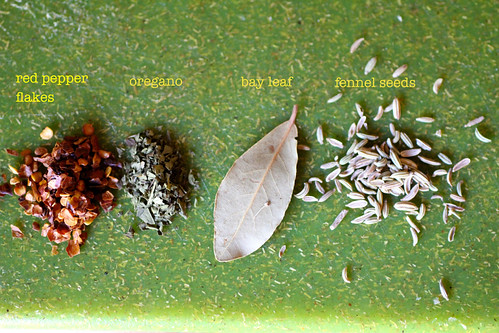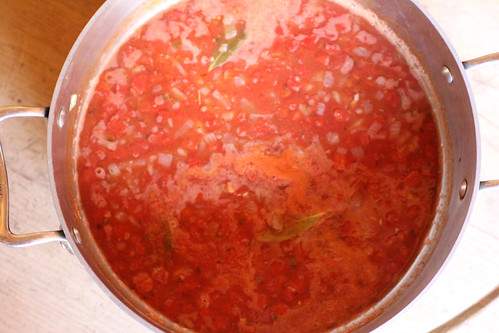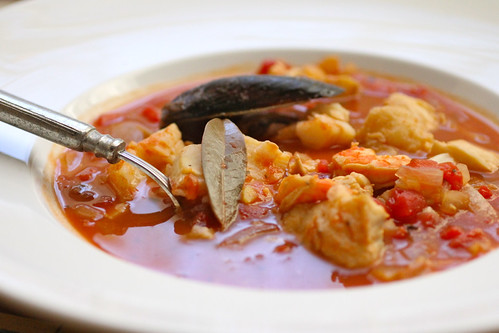The very moment my food-enunciating paranoia hit was when I was on a date with a blue blood type boyfriend, whose parents challenged me with culinary tests like eating whole lobster and using sauce spoons. At an unpretentious restaurant while we glanced over the menu, he displayed a rare moment of seeming humility and asked me how to pronounce… and he pointed to this word – gnocchi. Trying to show an upper hand for once, I boldly guessed – not from my knowledge of gnawing and gnarly – but rather my uncultured assumptions that this word was foreign and thus would be spoken with a hard g as in… nothing else I knew of. Are you envisioning this scene. “It’s ga – nyo – key,” I said. He took it in and when the waiter asked for his order he said, “I’ll have the nyo-key [with a silent g that screamed idiot].” The only test I didn’t fail with this guy was the one that challenged me on whether to stay with him or not.
Although many years and meals ago, the psychosis lingers which might explain my avoidance of ordering ciopinno despite it celebrating all the foods fit for a queen – succulent fish and seafood combined with aromatics in a tangy fresh tomato base stock. But, when unavoidable inspiration from this monthly delight offered a recipe so simple, yet rich in flavor, I had to make it and, admittedly, I had to look up how to say it:
chu PEE no.
And I would have thought see- o – pee – no just like I still think it’s broo-shet- a, and that cioppino is Italian when in fact it’s a San Francisco treat adding to the glorious bevy of Italian-American fare.
Make this would you already. Serve it with a crusty bread and green salad. It’s delicious the next day and I suspect it would even freeze well, although we’ve never had enough leftover to freeze.
You need two items from your grocer’s shelves.

Two chopped up bits of fresh aromatics.

Seasonings.

And your tomato base is ready for whatever seafood you prefer or that which is fresh and on-sale in the fish department.

Serve with a light, citrusy salad and crusty bread for sopping up the last drops of tomato stock.
[recipe]
cioppino – easier to prepare than to pronounce
preptime 15 minutes serves 4-6
cooktime 30 minutes
1 t fennel seeds
3 T olive oil
1 medium onion, finely chopped
1 small (or 1/2 large) fennel bulb, finely chopped
4 garlic cloves, coarsely chopped
3 bay leaves
1 t dried oregano
1/2 t crushed red pepper flakes
Kosher salt and freshly ground black pepper
1 28-ounce can crushed tomatoes (San Marzano for best flavor)
1 1/2 c dry white wine
1 8-ounce bottle clam juice
seafood: 3-4 lbs preferable, select what you and your family most enjoy and will hold up (sole, for instance, falls apart), but ideally you have a white fish, a shellfish, and a mussel or two for presentation (wink). Other options include, squid, scallops, catfish, orange roughy, swordfish.
1 1/4 lb skinless fillets haddock or U.S. Pacific cod, cut into 1″ pieces (haddock works best)
1 1/4 lb large uncooked shrimp, peeled and deveined, or frozen king crab legs, thawed
1 1/4 lb mussels, scrubbed, debearded (optional)
- Toast fennel seeds in a small skillet over medium heat until fragrant, about 2 minutes. Finely grind in a spice mill; set aside.
- Heat oil in a large heavy pot over medium-high heat. Add onion, fennel, garlic, bay leaves, oregano, and red pepper flakes. Season with salt and pepper. Cover, and cook, stirring occasionally, until onion and fennel are soft, about 12 minutes.
- Stir in ground fennel seeds, tomatoes with juices, wine, clam juice, and 1 cup water. Cover, bring to a boil, reduce heat to medium-low, and cook, stirring often, until flavors meld, about 15 minutes.
- Stir in fish, mussels, and shrimp and bring to a simmer. Cover and cook for 2 minutes. If using squid, add at this point, cover, and cook until mussels open and seafood is cooked through, about 5 minutes (discard mussels that do not open).
- skip the fennel seed step
- buy pre-chopped onion
- leave out fennel and use more onion
- use frozen uncooked shrimp & fish (thaw before putting in stock)
- make a double batch and freeze half
- do-aheads: stock, vegetables, cut & clean seafood.
recipe adapted from Bon Appetit magazine and provided by your friends at crunchtimefood.com


6 Comments
I’m looking forward to trying this, but only with sustainable and safe fish. Orange roughy, for instance, is very high in mercury, and their populations are decimated from overfishing. Imported shrimp and swordfish are also problematic. Best to be sure, especially if you’re feeding children and whether or not you worry about the future of our oceans. Go here: http://www.montereybayaquarium.org/cr/SeafoodWatch/web/sfw_regional.aspx
Pam, I love your comments and completely support the mission. I wish everyone subscribed to the guidelines laid out in the Seafood Watch. I buy my fish from Whole Foods, the farmers market or Santa Monica fish market, but I know not everyone will go that far or spend that money (although I bet you believe like we do: pay the farmer now or the doctor later). The link you provided, thank you very much, is full of amazing information. Seafood Watch also has an app that makes it easy to use when you shop. Thanks so much for all the great information.
Following up on my initial comment: This soup is outstanding! I made it last evening for my husband and our house guest, and we all were smacking our lips. I wouldn’t change a thing; this soup is easy to make but tastes like it required more effort.
Thanks Pam. Love to hear that you enjoyed it as much as we did. Appreciate your comments. Sherri
This recipe looks fantastic and I cant wait to make it. I want to mention one small issue though – your recipe calls for San Marzano tomatoes but the tomatoes pictured above – even though it says San Marzano in huge letters all over the can – are imposters. It’s just a brand name – and a rather deceitful marketing campaign. Just read the label. I believe the Cento brand sells genuine San Marzano tomatoes – but even then you have to read the can carefully because not all their tomatoes are the glorious San Marzanos. I wouldn’t even mention it if they didn’t make a difference, but they do. Thanks for a great recipe.
Thanks Gail for enlightening me about ‘San Marzano’ tomatoes. Your point is timely having just come from WF with two cans of the impostors preparing to make a tribute batch of Marcella Hazan’s tomato sauce. First, since this post, I’ve followed the recommendations of America’s Test Kitchen and sought out Muir brand for flavor, apparently beating out even the San Marzanos, but WF was out of Muir. Then, I guess it’s how far one wants determine authenticity – grown in Italian soil, which is how I understand the DOP label of authenticity is awarded or like the brand I showed, which provides tomatoes grown from San Marzano seeds, but not, as you indicated, grown in Italy. I believe there is something special about the soil that’s not been abused with GMOs. I’ve tasted better melons and tomatoes in Tuscany and the colors of produce almost scorch the eyes. For canned products, however, it has to come down to personal tastes. Which brand do you prefer and I’ll give them a try?
Leave a Reply